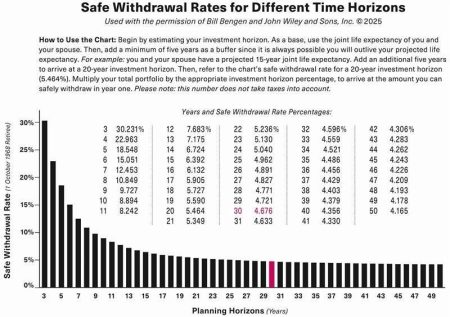Where’s the best place for you to live in retirement? There are plenty of reports that try to provide the answer. For example, Bankrate recently released a report that ranked the best states to live in after retirement. According to its analyses, the top five states to retire to are:
- New Hampshire
- Maine
- Wyoming
- Vermont
- Idaho
Bankrate based its rankings on many factors, including neighborhood safety, health care, taxes, affordability, and weather. Florida surprisingly ranked 41st on the list, considering that many cities in Florida often rank high on lists of the best places to retire. This just illustrates that there are many factors that can influence what somebody else considers the best place to retire and why the lists often don’t agree with each other.
What’s Missing From Lists On The Best Places To Retire
While reports on the best place to live in retirement can be helpful by identifying and analyzing many features that can impact your quality of life, what’s missing is the word “your.” Deciding where to live in retirement is a highly personal decision, one that should consider your goals for retirement and your particular circumstances regarding family, friends, interests, and finances.
Because your life in retirement will change compared to when you were working, it makes sense to rethink your living situation in retirement. You’ll want to determine how your current home and community measure up to alternative homes and locations that could better fit your needs and desired lifestyle in retirement.
To help you decide if moving could help improve your life in retirement, you’ll want to consider the general geographic location of your new residence as well as the specific house and neighborhood you’re considering. The following two checklists can help you systematically explore your options. As you review these lists, be sure to keep in mind your potential needs in your go-go, slow-go, and no-go years.
Your Goals For The General Geographic Area
Here’s a checklist of possible goals that might be important to you when choosing the general geographic area that might best meet your needs in retirement:
- You want to live a reasonable distance from family and friends.
- You need to live close to dependent parents or grandchildren to provide care for them.
- You want to be close to work or volunteer opportunities.
- You have specific activities or interests you’d like to pursue.
- You need to reduce your living expenses by moving to an area with lower housing costs.
- You want to reduce state and local taxes, such as income taxes, property taxes, and sales taxes.
- You have specific health care needs and providers that will influence the choice of location.
- You want better or different weather.
- You’d like to live in an area that’s safe from extreme weather events and disasters, such as hurricanes, floods, and fires, which can pose a risk to your safety.
- You want to take advantage of regional public transportation, such as major subway systems.
- You want to live a reasonable distance from airports (if travel is important to you).
If you have other reasons that could influence the general geographic area where you wish to live, be sure to write them down.
Your Goals For The Specific House And Neighborhood
The following is a list of the possible goals that might be important when choosing the specific house and neighborhood that best meet your needs:
- You want to be close to friends and family for social engagement and support. Isolation and loneliness can be a real challenge as we age.
- You want to be close to your current favorite activities.
- You’d like a home that has a sense of community and is conducive to meeting new friends.
- You have specific needs that are best served by local health care providers, businesses, or public agencies.
- You want to feel safe.
- You want to take advantage of local public transportation, such as trams and buses.
- You want a safe, walkable, or bike-friendly neighborhood within a short distance of parks, open spaces, shopping, and social activities.
- You want a house that meets your basic living and social needs, such as having a home office or room for guests.
- You want to reduce your housing expenses, such as monthly payments, utilities, maintenance, and taxes.
- You want maintenance obligations and yard work that are manageable as you age.
- You need a house without stairs.
- You need a house to accommodate possible physical limitations—for example, one that allows wheelchair access.
- You want to be able to age in place in your later years.
Identify any other reasons that could influence the specific home and neighborhood where you wish to live, and add them to your list.
How To Use These Lists
If you like to systematically explore your options, use this article to rate the priority for each item on these two checklists. You could use a scale of one to three that ranks the items as follows:
- Must have
- Nice to have
- Not important
Prioritizing the items on these checklists can help you more easily make the inevitable trade-offs and compromises.
It’s important to understand that you won’t likely get all your needs met by any one location, community, or home, so you’ll want to make the choice that seems to fill most of your essential needs. Be sure to rate your current location, neighborhood, and home based on these two lists, too, so that you can compare them with the alternatives you’re considering.
These lists aren’t comprehensive, since you may have other considerations that influence your decision about where to live, including the time, money, and effort of moving. You’ll also want to consider the impact on your finances overall, including property taxes and homeowners insurance.
Deciding where to live in retirement is an important decision that many people overlook. Don’t ignore it! Instead, spend the time it takes to consider all your options. You’ll learn a lot in the process that can help you better enjoy the rest of your life.
Read the full article here









